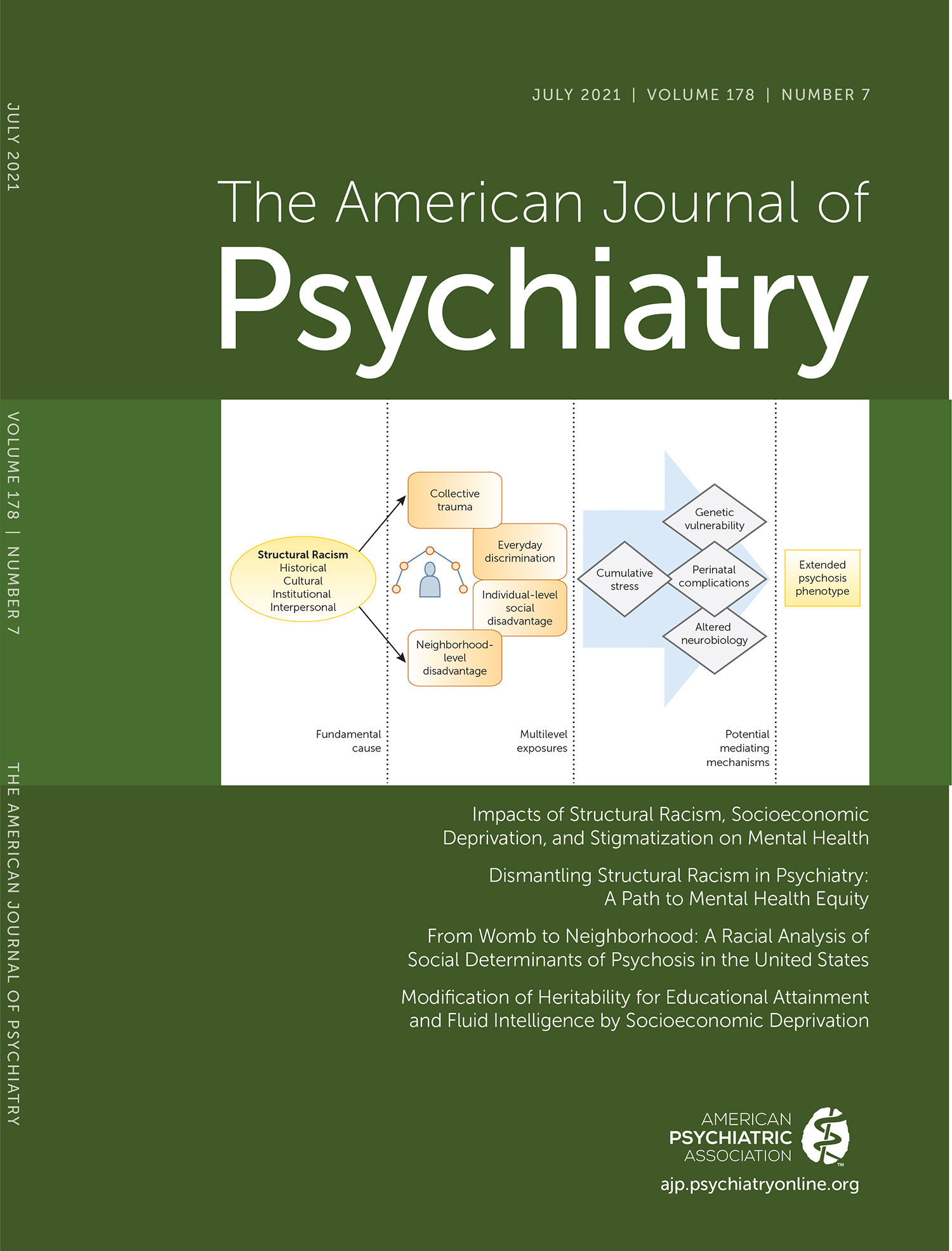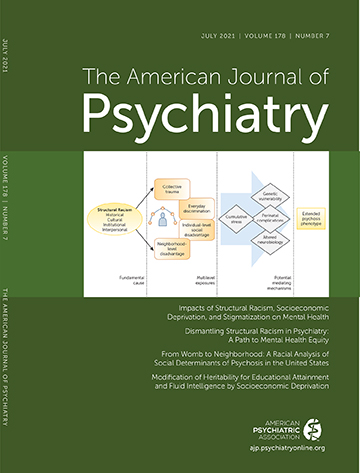The need for more and better treatments for opioid use disorder has never been more acute: the collision of the COVID-19 pandemic with the ongoing opioid overdose epidemic has led to an increase in opioid use and opioid overdose deaths (
1). COVID-19 has had a disproportionate impact on marginalized and disadvantaged populations (
2), and individuals with opioid use disorder often fall into this category. One recent study demonstrated increases in opioid overdose among non-Hispanic Black individuals but decreases among non-Hispanic Whites. The investigators concluded that COVID-19-related exacerbations in preexisting stressors, social isolation, and economic deprivation were felt disproportionately in Black communities, contributing to the increase in opioid use (
3).
In light of the worsening opioid crisis, the article by Nunes and colleagues (
4) in this issue of the
Journal is welcome. There are currently three different mechanisms of action for medication approved by the U.S. Food and Drug Administration to treat opioid use disorder: full agonist (methadone), partial agonist (buprenorphine), and antagonist (naltrexone) medications. In addition, there are short-acting and long-acting injectable forms of naltrexone and buprenorphine. This gives clinicians choices but little information to guide them about which treatment might be best for which patient. Nunes and colleagues shed some light on this issue through a secondary analysis of a comparative effectiveness trial (
5) in which patients with opioid use disorder were randomly assigned to buprenorphine-naloxone (taken sublingually daily) compared with extended-release naltrexone (a once-per-month injection). They found that once initiated, both medications were equally safe and effective in preventing relapse to opioid use.
The trial took place in real-life treatment settings, so while all participants went to inpatient detoxification, the time and type of detoxification treatment (medications versus none) varied greatly. Some individuals were discharged after only a few days, while others stayed longer. Medications were administered after discharge. Demographic and clinical characteristics were examined as moderators of relapse to regular opioid use and failure to initiate medication. Failure to initiate medication is critical in comparing these medications because buprenorphine can be initiated when a patient is actively using opioids—as long as they abstain from opioids for long enough (on the order of hours) to manifest opioid withdrawal—whereas naltrexone administration requires full withdrawal from opioids before dosing to avoid precipitated withdrawal. This “induction hurdle” for naltrexone is a particular issue in the United States where most opioid use disorder treatment is outpatient and maintaining abstinence for the necessary time for naltrexone initiation can be challenging. Consistent with this, there was a significant between-group difference in those initiating medications favoring the buprenorphine group. However, among participants who started medication, there were no group differences in primary outcomes, and the naltrexone group actually experienced lower craving during the early weeks of treatment compared with the buprenorphine group (
5). In addition, failure to initiate medication in the naltrexone group was associated with starting the medication early, within 3 days, after the last opiate use. Other moderators of failure to initiate medications included medication preference (not assigned to preferred medication), higher pain levels (increased naltrexone failure), and parole/probation (more naltrexone initiation). Of importance, patients who failed to initiate medications had close to 100% relapse and accounted for 50% of the fatal overdoses seen in the study. The most significant moderator of 24-week relapse in the intent-to-treat sample was homelessness. Individuals who were homeless had less relapse with naltrexone and more relapse with buprenorphine. This makes sense, as chaotic lifestyles can make daily medication regimens difficult to comply with.
Of interest, in a study conducted in Norway comparing sublingual buprenorphine with extended-release naltrexone (
6), all participants went through similar inpatient detoxification for the same period of time before starting study medications. The investigators found no between-group differences in medication initiation, and the extended-release naltrexone group had lower heroin and illicit substance use and higher satisfaction with their treatment and with life compared with the buprenorphine group. A further analysis of this study demonstrated lower insomnia in the extended-release naltrexone group throughout a 24-week follow-up and similar improvement on anxiety, depression, and anhedonia in both groups (
7).
Bottom line, Nunes and colleagues and others demonstrate that both naltrexone and buprenorphine are useful treatments for opioid use disorder. However, in all of the studies cited, the dropout rate was close to 30%, so clearly there is much room for improvement in opioid use disorder treatment. Engaging patients in shared decision making about treatment options and respecting their preferences are important in optimizing response to the treatments we have. Extended-release naltrexone is the treatment of choice for some individuals, so we need to develop and implement best practices for optimizing treatment initiation to improve the viability of this valuable treatment. Clearly, some individuals can benefit from extended-release naltrexone, but our system of care makes it difficult to use. In countries like Norway, where there is a well-supported public treatment system that allows for longer inpatient stays as needed, it is easier to implement best practices in a more uniform manner. To address the opioid epidemic, we need to explore new treatments as well as optimize the delivery of the treatments currently available. The article by Nunes and colleagues takes us one step further in this critical journey.

